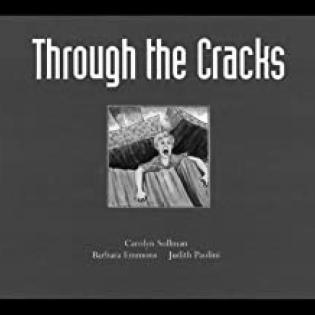Through the Cracks
When Stella loses pleasure in her classwork, she takes us “through the cracks” of a classroom and shows what is happening to all of the students who are not interested and engaged in their learning. We visit classrooms where students are actually learning because their emotional, mental, and intellectual needs are being met through bright and cheery classrooms where students discuss their work and ideas. We visit classrooms where visitors share real-life knowledge and experiences, classrooms where students use their imagination to research and create projects, and classrooms where they work outdoors to engage nature lovers. Stella shows us how engagement in learning can make a difference in the world and in children. This book encourages adults (teachers and parents) to ensure the future of our world by keeping ALL kids creatively engaged.
Literature Guide by Kathy Adamonis
Before Reading
Ask: What does the idiom “through the cracks” mean? This saying is an idiom (a group of words with a different combined meaning than the individual words). To fall through the cracks means to "go unnoticed or undealt with; to be unintentionally neglected or ignored, especially in a corp-orate, political, or social system."
Show: Look at the picture of the school yard at the beginning of the book. What do you notice about the school? What is going on in the neighborhood around the school? Identify some of the problems/issues that you see.
Connect: Have you seen anything similar to this in your school or neighborhood? How does this impact the community?
During Reading
Ask: Why are the students’ feet going through the floor of the classroom? What do you think this means?
Show: Look at Christopher. What is happening to him? Why? What does it mean when Christopher joins Stella in the dark, under the classroom floor? What do you notice? What will make the light brighter? What do you see in those classrooms where the light is bright?
Connect: Think of a time when you were really excited about something your teacher was doing in school. What made you want to do the work? How did it make you feel to be able to show what you know in a way that was interesting to you? Why does the book show this as the light is becoming brighter? How are the two connected?
After Reading
Ask: How do Stella and Christopher (and other students) change? What happens to make them become engaged learners?
Show: Look at the picture of the school yard at the end of the book. What do you notice about the school? What is going on in the neighborhood around the school? How is this different than what you saw at the beginning of the book? Why do you think it changed?
Connect: How can you and your friends make a difference in your school/community? What classroom activities would help you be an engaged learner? How can this help you make your community a better place to live?
Activities
- Complete the Blue Sky Visioning activity as a group. Follow the directions to draw a picture of your idea of a perfect classroom, community, or a way you would fix an issue that you are passionate about. Draw your vision of what change would look like. Share your vision with others. Research more information about an issue that concerns you.
- Discuss first steps or ideas on how to work toward the visions. What are you passionate about and how can you impact change in your community? For example, if you are passionate about food issues, you might want to start by volunteering at a local food pantry or giving time to a food bank. Small steps matter!
- Focus on what tiny steps you can take right now. This may include the following:
- Call a nonprofit to find out if there are any volunteer opportunities.
- Interview a neighbor to find out if there’s anything you can do to help them out such as yard work and other chores.
- Do some research and share your information (in a flier) with others.
- Volunteer to help someone without expecting anything back.
- Change your habits (for example you might begin to recycle).
- Collect resources to help others.
